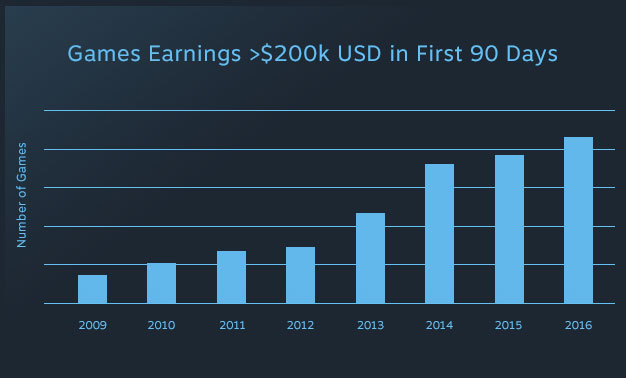Valve: Steam update increased conversion to purchases by 27%
A series of innovations in the Steam game store has improved the visibility of programs, payment conversion and sales. Valve shared specific figures.

In his post on the Steam Developer Community forums, Alden said that the company is moving further away from the practice of direct content management of the platform.
“Valve used to decide which games to show to all users on Steam. However, later we realized that it was very unwise on our part to decide for all users because of the variety of tastes. The system also limited the possibilities of unexpected hits.”
For the past two years, Valve has been releasing updates to Steam that worked to personalize the platform’s client. One of these updates was a significant change to the homepage as part of the Discovery 2.0 update, released in November last year.
As a result of the update, 46% more games are shown to users on the Steam homepage. “Optimization of algorithms allowed us to increase the visibility of many titles, primarily it affected the demonstration of small titles to target audiences,” Kroll said.
The number of unique games promoted on the main Steam
 The conversion of purchases from the main block of the main page after the launch of Discovery 2.0 has also grown significantly. Overall, the conversion rate for the block increased by 27%. Today, the highest conversion rate on the main page of the carousel is “Popular with friends”. Here it reaches 15%.
The conversion of purchases from the main block of the main page after the launch of Discovery 2.0 has also grown significantly. Overall, the conversion rate for the block increased by 27%. Today, the highest conversion rate on the main page of the carousel is “Popular with friends”. Here it reaches 15%.
Since the publication of updates aimed at improving the findability of games, the number of purchases made per user per year has almost doubled. In 2016, one buyer made an average of 8.3 purchases (one-time purchase of one or more games).
Number of annual purchases per Steam user
 The average time spent by each user in games has also grown.
The average time spent by each user in games has also grown.
Average time spent by a user playing games
 The number of games that earned from $200 thousand in the first 90 days from the release date has also increased significantly since the start of updates.
The number of games that earned from $200 thousand in the first 90 days from the release date has also increased significantly since the start of updates.
The number of games that earned more than $200 thousand in the first 90 days
 Kroll did not provide specific data on the last two metrics.
Kroll did not provide specific data on the last two metrics.
Source: Gamasutra